
Art games. Oh yes, we totally went there. Wait, come back! It’s not what you think! Look, we’re not going to sit here and open up some banal and dried-up debate on whether games are art or not – if we did that, we’d be practically contractually obligated to kill ourselves as decreed by Section 45, Paragraph 98 of the Contract of Life we all hastily signed whilst escaping from our mother’s womb.
No, what we’re here to do, is to look at five areas of gaming that stretch their sticky little hands into all forms of what is more classically understood as Art, and why, I believe, they are justified to hold claim to that title. No arguing, no high-brow, strokey-beard, pipey-smoking exploration of definitions and boundaries – just five themes that stand out above the rest, that go a little bit deeper, and that ask a little bit more – and that present themselves in such a way that we can’t help but go, “Huh?! Well I’ll be …”.
If you think that I just thumb-suck this stuff, you’d be totally wrong. Because, for the first time ever, we’ve got the help from an expert: Let me introduce to you the very non-parody, totally legit, and in no-way-ripping-anyone-off expert of art gaming, Sir Todger Camembert:
the first time ever, we’ve got the help from an expert: Let me introduce to you the very non-parody, totally legit, and in no-way-ripping-anyone-off expert of art gaming, Sir Todger Camembert:
Fondest greetings to you, you saucy sacks of succulent sustenance. I’m salivating at the mere thought of sharing my supremely superfluous services with you on this entire matter. Pay no heed to certain other critics, to whom I bear no resemblence or reference, who have declared your most pleasurable pastime to be nothing higher-brow than frequent fanciful finger flangelating. But listen to me ramble on so rambunctiously; there is work to be done!
The Art of Sight
![[MAIN] Art of Sight - Machinarium [MAIN] Art of Sight - Machinarium](http://devmag.org.za/blog/wp-content/uploads/2011/05/MAINArtofSightMachinarium.jpg)
Let’s kick off with the obvious one then, shall we? When you think of art, your mind usually always goes straight to a painting hanging in a gallery somewhere, or perhaps a statue standing in the great Hall of some ancient building. In either case, you immediately think of something visual – something seen.
Most games, as we find them today, are a visual affair (with only a few exceptions); but while there are a lot of games that shine through with amazing hi-def graphics – with that oily sheen that seems to be on everything now – for a game’s visuals to be artistic, we need, and expect something that goes a little further.
It’s not enough to have the most realistic world, or to have the highest pixel count. It’s not about doing the same thing but better. It’s all about taking a unique approach to presentation – doing something different, and making something memorable.
And where would be the best place to find these striking visuals? Why, the Indie scene, of course.
Case-in-point: Machinarium
The reason I chose Machinarium above the rest, aside from my obvious bias, is because – just look at it (as I have said so many times in the past). Each scene, each character, every minor detail painted before your eyes in this adventure game is a work of art. Look, it’s not colourful, and it’s not a very happy picture – but then art is often not an expression of a perfect world.
Check out: Machinarium Concept Art.
See Also: Braid, Limbo, Okami.
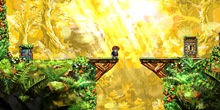 |
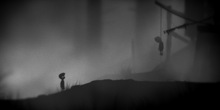 |
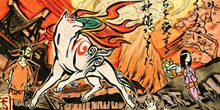 |
Camembert says:
Ah, yes, ’tis true. Seeing such splendour takes me back to the days of old, when I used to pose nude for my childhood sweetheart. Oh Beatrice! Such wonderful memories … Oh! Oh my! I do apologize – I got lost in my own reminiscence for a second there. Ahem! Let me regain my composure. Indeed, how could anyone argue over the merits of such splendorous visual presentation? If this is not art, then I shall choke on my own monocle!
The Art of Sound
![[MAIN] Art of Sound - Rez [MAIN] Art of Sound - Rez](http://devmag.org.za/blog/wp-content/uploads/2011/05/MAINArtofSoundRez.jpg)
But we know better than to think of art as only a visual experience, right? Of course. We’re totally deep like that. Moving on to the next sensory experience, we have music as an art form. After all, if we refer to, say, Justin Bieber as a top-perfoming “artist” – then surely games can be classified as art.
Let’s try not confuse the issue, though. When talking about art games and sound, we’re not really simply referring to a game’s soundtrack – after all, the list of games with masterful soundtracks would take up a rather large document, and I don’t have the space for that. I’m not lazy, it’s a space thing. Seriously. [Yes, the Internet is too small. Ed.]
The art of sound in games goes much further than memorable music that plays on while you decapitate zombies and such – it usually plays a central role in creating the game’s experience. While Heavy Rain’s soundtrack has earned its creators a BAFTA for its moving overtures; Dead Space has received the same accolade for its super use of sound effects to create the terrifying feeling of being lost in space.
But the true art of sound can also present itself in far more colourful ways.
Case in Point: Rez
Anyone who has played Rez can tell you that, short of ingesting some mind-altering substances, you don’t often get blown away as much as you are when you take in this digitized sensory overload. Look past the trippy visuals and super-fast gameplay, and you realize that the true genius of this game comes from the absolutely ridiculous soundscape. Traditional sound effects are replaced with electronic music, so that players compose their own music tracks as they play the game.
See Also: Flower, Heavy Rain, Dead Space.
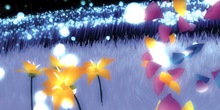 |
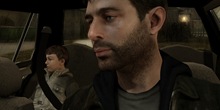 |
 |
Camembert says:
Musical meanderings in these videographied games certainly ellicit an illicit response from my loins. Is there anything greater than the emotive emulsions pouring forth from the bowels of such an auditory beast? I surmise not! Only a fool would deny such delights as being anything but the purest form of art!
The Art of Story
![[MAIN] Art of Story - Alan Wake [MAIN] Art of Story - Alan Wake](http://devmag.org.za/blog/wp-content/uploads/2011/05/MAINArtofStoryAlanWake.jpg)
Now we’re heading further down the rabbit hole to the artforms that require a little bit more from their beholders. Visual and auditory art are easy; you’re letting the art do the work for you – you just need to sit back and take it all in. But when it comes down to, say, reading a book, you’re suddenly expected to digest what’s delivered and recreate the art in your own mind.
Indeed, folks, like it or not, literary works have long been considered an art in their own write (see what I did there?). And the vast worlds created by a compelling narrative are definitely not lost on our dearest form of interactive entertainment.
I’m not going to lecture on what makes a good story (I believe I’ve already expended that route), but it’s undeniable that there exists more than a few examples of excellent story-telling in gaming – from the convoluted to the completely batsh*t crazy, the happy sunshine fairyland to the dark, gritty and twisted depths of the human condition. While games take a different approach to telling the story, the meaning and art of impression contained within them has as much a lasting effect on us as a best-selling novel.
It’s about getting absorbed into the world, feeling for the characters, and being fully immersed in the narrative.
Case-in-point: Alan Wake
I’m sure many of you will disagree with me here. Alan Wake isn’t the best game ever, and its story isn’t the best gaming has to offer by a long shot. But my reason for highlighting this game here lies mainly in the way the narrative presents itself. If nothing else, it’s definitely a fresh take on how to tell a story – a story within a story that bleeds out and directs the overarching narrative. Gameplay issues aside, it’s difficult to shake the feeling of being right inside an interactive Stephen King novel. It’s that sort of self-referential approach to the game’s narrative that I found to be quite impressive – and also the way it draws from other iconic stories (the hedge from The Shining, The Birds).
It’s a pity about that lip-synching though.
Check out: Alan Wake Critical Analysis.
See Also: Beyond Good and Evil; Fallout 2; Grim Fandango
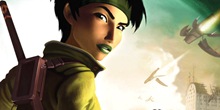 |
 |
 |
Camembert says:
I once got immersed in an indecent tale of the most tremulous trials; both terrible and tittilating (in a way only such events can be) – indeed it was a story for the ages, so sorrowful, so sincere, and so seductively sullen – a vast array of emotions all explored through nothing but a telling of a simple story. Sesame Street. Oh Elmo! Truly you are the hero of our time.
The Art of Silver Screen
![[MAIN] Art of Scope - MGS [MAIN] Art of Scope - MGS](http://devmag.org.za/blog/wp-content/uploads/2011/05/MAINArtofScopeMGS.jpg)
Gaming has had a lot to contend with in gaining a reputation for being considered as art. But in more modern times (with the current and previous generations, at least) the level of technology in our systems has given games the capacity to be on par with one of our most favourite art forms – cinema.
A lot of gamers loathe the dreaded “cinematic experience” many games offer us – you know, the gamers who want to play games, as opposed to appreciate them [/smug snob expression] – but have a look at any game that has cut scenes in it and you will find camera shots, angles, and effects so reminiscent of big-budget Hollywood films.
If cinematography wasn’t an art, they wouldn’t dish out bucketloads of awards to the people who do it. And even though cinematographers in game development hardly get the same level of credit and cheering, the art of getting the scene just right is no less important or impactful. Having power over the camera is having power over how the story gets told: a single change in focus, zoom, or angle can change the underlying meaning of a shot completely. Therefore, to paint the picture, each take needs to be clearly thought out.
Case-in-point: Metal Gear Solid 4
A lot of you were probably wondering when good ol’ Metal Gear would enter the fray. Almost infamous for its baffling dialogue and convoluted plotline, MGS is the shining star of cinematic experience in gaming, with hours upon hours of cut scenes with interjected bouts of gameplay. This is no more apparent than in the fourth entry to the series, which I almost feel was more like a movie with playable bits than a game with great cut scenes. Every scene, every angle, every cut and pan makes you feel as if Mr. Kojima is trying to tell you something.
Check out: Metal Gear Solid 4 Analysis.
See Also: Final Fantasy 13, Uncharted 2, Mass Effect 2
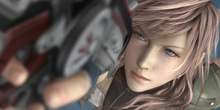 |
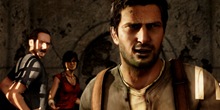 |
 |
Camembert Says:
While many of my prudish peers in the critique-business find this “cinema” phenomenon to be a passing fad of no foundation, I must say, I do find the thought of dissecting another person’s intended meaning to be rather appealing. Meaning derived implicitly, technically through subtlety – there is a definite draw. But as long as art games cater to my insatiable need for sumptuous bosoms, I see no reason I would ever deviate from my chosen path.
The Art of Speculation
![[MAIN] Art of Silent Hill - Silent Hill 01 [MAIN] Art of Silent Hill - Silent Hill 01](http://devmag.org.za/blog/wp-content/uploads/2011/05/MAINArtofSilentHillSilentHill01.jpg)
So how much deeper can we go? The greatest form of art often does not lie within the artwork itself – of course, that’s where it starts, but what transforms a work of art into a masterpiece is that it allows us to wonder – to attach our own, different meanings to it, so that the work transcends the artist’s original vision and becomes something greater..
Look at the Mona Lisa. To this day, people still debate and discuss the implicit meaning in her smile. The most impressive works are the ones that leave you to create and build more into the world than simply having to accept what is presented to you. It’s difficult to define this human element to art, because it’s one massive variable, but what makes art art is the impression it leaves. When people go out and explore an entire universe of their own making centred around one piece of art, that must mean that it made a lasting impression.
Case-in-point: Silent Hill
Silent Hill, as a series, is one of the most chilling and frighteningly dark games in history. The gameplay itself is sluggish and not all that great, but every facet of the games serves to continuously create the claustrophobic atmosphere that breathes down your neck as you stumble through the fog. It fulfils and checks every single box on the list of art forms, from its dark and often downright disgusting imagery together with the haunting music and industrial effects, to the meticulously planned cutscenes that portray the disturbing plot centred around the occult and the birthing of Dark God. Everything in Silent Hill works together to leave a lasting impression.
 |
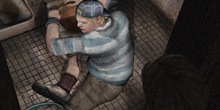 |
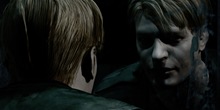 |
And yet, what puts Silent Hill at the top of this list stretches far beyond the games themselves. The thing that pushes Silent Hill that little bit further is the amazing world created by the fans, who speculate, discuss, and dissect each and every aspect of the game to discover, for themselves, what Silent Hill is.
Silent Hill has become more than just a game – it’s become an entire mythos about the universe in which these games take place. It’s a world that keeps asking questions and that is unbounded in terms of where it can go.
 |
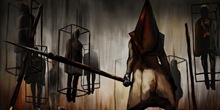 |
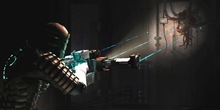 |
Check out: Silent Hill Series Analysis
Camembert says:
Why did breasts not make it to the top of this list? Beautiful bouncy bosoms! They are an art form in themselves! What is this meta-experience nonsense? That’s it! I can no longer sit idly by while such injustice goes overlooked! Fie! Shame on you! I shall become the force that opposes you all! No longer am I Sir Todger Camembert; I shall henceforth be called Rog—
Oh dear, never mind him, folks. Tut tut.